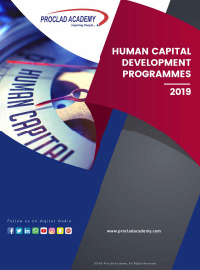Piping System Design, Operation and Maintenance
| Ref No. | Dates | Venue | Fee (US$) | |
|---|---|---|---|---|
| MN 005 | 12 - 16 Apr 2020 | Dubai | 4500 | Register |
| MN 005 | 16 - 20 Aug 2020 | Dubai | 4500 | Register |
| MN 005 | 22 - 26 Nov 2020 | Dubai | 4500 | Register |
Piping System Design, Operation and Maintenance
Introduction
A piping system is generally considered to include the complete interconnection of pipes, including in-line components such as pipe fittings and flanges. Pumps, heat exchangers, valves and tanks are also considered part of piping system. Piping systems are the arteries of our industrial processes and the contribution of piping systems are essential in an industrialised society. Many piping systems are subjected to hazardous service conditions and damage mechanisms which, if not adequately monitored and assessed, could result in major failures with consequential significant injuries and business losses. It is therefore essential to inspect the piping system to detect any damage, characterize it, and assess its impact on the equipment integrity.
This Proclad Academy training course is designed to help participants gain a comprehensive knowledge of elements that are essential for the design, operation, and maintenance of pipelines. The design of the gathering network, pressure drops, fluid pattern, and the network arrangement will be discussed in detail. The course will also provide a practical way to learn about the elements considered in the design, code, factors, legislation, material selection, corrosion (internal and external) considerations, and management. Hydrotesting, pigging (cleaning and smarts), pipeline integrity analysis using inspection survey, monitoring data, fitness for purpose, risk analysis, and predictive and preventative maintenance will also be covered.
The key features of Proclad Academy’s Piping System Design, Operation and Maintenance training course are:
- Piping codes, standards and industry guides
- Selection and sizing pipe and fittings
- maintenance inspection techniques
- Problems in operation: hydrostatic and leak testing
- Inspection of corrosion, classification and evaluation of corrosion and structural integrity
Learning Objectives
Upon successful completion of Proclad Academy’s Piping System Design, Operation and Maintenance training course, the delegates will be able to:
- Identify the relevant codes, standards and industry guides
- Describe the process of material selection and properties
- Describe the process of selection and sizing pipe and fittings
- Explain the maintenance inspection techniques
- Identify methods for hydrostatic and leak testing
- Describe the process of classification and evaluation of corrosion
- Explain the evaluation of crack flaws and mechanical damage
Target Audience
Proclad Academy’s Piping System Design, Operation and Maintenance training course is intended for operations, engineering, inspection, and quality personnel responsible for specifying, operating, inspecting and maintaining piping systems.
Training Methodology
This training course will discuss pipeline design, operation, inspection, maintenance, and integrity management. Specifics topics that will be covered include coating monitoring and inspection, engineering and design, operations control and monitoring, risk based inspection (API 580 and API 581), projected remaining life and fitness-for-service assessment (API 579).
Course Outline
- Overview of Codes and Standards: Design, Inspection
- ASME & API Codes and Standards
- Fundamentals of Maintenance and Integrity
- Pipe Dimensions and Schedule number
- Understanding System Design Pressure
- Pipe and Pipeline Sizing Formula with Applications
- Six fundamental aspects of Piping Systems Integrity
Leak Detection
- On Line Leak Detection
- Periodic Inspections
Gathering System and Pipeline Design
- Gathering system
- Pipeline configuration
- Pipeline design
- Location classification
Maintenance and Repair Work Packages
- Design Margins vs. Operational Margins
- Wall Thinning Corrosion Mechanisms
- Fitness-for-Service Evaluation of Corroded Piping and Components
- Case Histories
- Cracking Mechanisms and Crack-Like Defects
- Fitness-for-Service Evaluation of Crack-Like Flaws in Piping and Components
Repair Techniques
- Patch & Weld Repairs
- Clamps/Flanges
- Overview of Pipe and Pipeline Welding Practice/Welded Repairs
- Heat Treatment
- Pipeline & Piping Inspections
Risk-Based Inspection Techniques
- Repair Codes and Standards
- Welded Repairs
- Non-Welded Repairs
- Examination and Testing of Repairs
- Repair Packages and Management of Change
Pressure & Leak Testing
- Hydrotest
- System Testing
Pigging Techniques
- Types of Pigs
- Monitoring Internal Corrosion
Layout and Support
- Pipeline Loadings
- Review of Pipe Supports and Their Application
- Lessons Learned from Poor Support Practices
Corrosion Protection
- Cathodic & Anodic Protection Systems
- Impressed Current Systems
Vibration in Service & Pressure Transients
- Mechanical and Hydraulic Induced Vibration in Piping
- How to Measure, Analyse and Resolve Vibration
- Recognizing and Solving Liquid Hammer
- Pulsation
- Study of Pipeline Failures Due to Transient


